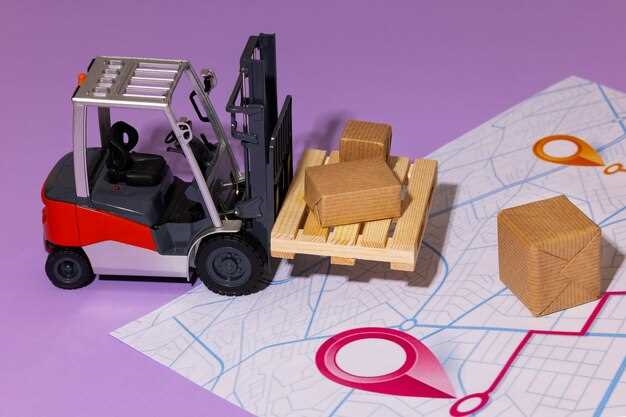Factors Affecting Art Insurance Premiums – How to Lower Costs Without Sacrificing Coverage

When it comes to safeguarding your valuable art collection, it is crucial to have a comprehensive insurance policy that provides adequate coverage. However, the cost of art insurance premiums can vary significantly depending on various factors that impact the overall risk associated with insuring artwork. By understanding these key factors and implementing effective strategies, it is possible to lower insurance costs without compromising on the coverage.
1. Valuation and Appraisal: The value of your artwork plays a significant role in determining the insurance premium. The higher the appraised value, the higher the premium. It is essential to have your art collection regularly appraised by a qualified professional to ensure accurate valuation. By keeping track of the market value of your artwork and updating the appraisals, you can avoid overpaying for insurance coverage.
2. Security Measures: Insurance companies consider the security measures in place to protect your art collection. Installing security systems, such as alarms, surveillance cameras, and secure storage facilities, can significantly reduce the risk of theft or damage. By demonstrating a commitment to security, you can negotiate lower insurance premiums.
3. Conservation and Maintenance: Proper conservation and maintenance of your artwork can have a direct impact on insurance premiums. Regularly inspecting and maintaining your collection can prevent potential damage and deterioration, reducing the risk for insurers. Implementing conservation measures recommended by experts can not only preserve the value of your artwork but also help in negotiating lower insurance costs.
4. Location and Transportation: The location of your art collection and the transportation methods used can influence insurance premiums. If your artwork is stored or displayed in an area prone to natural disasters or high crime rates, insurers may charge higher premiums. Additionally, the mode of transportation, whether it is by air, sea, or land, can also affect the risk associated with potential damage or loss. Considering these factors and taking necessary precautions can help in reducing insurance costs.
By understanding and addressing these key factors, art collectors can effectively lower insurance premiums without compromising on the coverage provided. It is essential to work closely with insurance professionals who specialize in art insurance to ensure that your collection is adequately protected at the most favorable rates.
Factors Influencing Art Insurance Premiums
When it comes to insuring your valuable art collection, there are several key factors that can influence the cost of your insurance premiums. Understanding these factors can help you make informed decisions and potentially lower your insurance costs without compromising on coverage.
1. Artwork Value
The value of your artwork plays a significant role in determining your insurance premiums. Higher-value pieces typically require higher coverage limits, which can result in higher premiums. It’s important to accurately assess the value of your art collection to ensure you have adequate coverage without overpaying for insurance.
2. Artwork Type and Rarity
The type and rarity of your artwork can also impact your insurance premiums. Certain types of art, such as antique or one-of-a-kind pieces, may be more difficult to replace or repair, leading to higher insurance costs. Additionally, artworks that are more prone to damage or theft may also result in higher premiums.
It’s essential to provide detailed information about the type and rarity of your art when obtaining insurance quotes to ensure accurate coverage and pricing.
3. Security Measures
The security measures in place to protect your art collection can also affect your insurance premiums. Insurance providers often offer discounts for properties with robust security systems, including alarms, surveillance cameras, and secure storage facilities. By investing in adequate security measures, you can potentially reduce your insurance costs.
4. Location and Storage Conditions
The location and storage conditions of your art collection can also impact your insurance premiums. If your artwork is stored in a high-risk area or a facility with inadequate climate control, the likelihood of damage or theft may increase, resulting in higher premiums. Opting for secure, climate-controlled storage facilities and ensuring your art is properly displayed and protected can help mitigate these risks and potentially lower your insurance costs.
In conclusion, several factors influence the cost of art insurance premiums. Understanding the value, type, and rarity of your artwork, implementing adequate security measures, and considering the location and storage conditions can all contribute to managing insurance costs while ensuring comprehensive coverage for your valuable art collection.
Understanding the Value of Your Art Collection
Appreciating the worth of your art collection is essential when it comes to ensuring its proper protection and insurance coverage. By comprehending the value of your artworks, you can make informed decisions regarding insurance policies and adequately safeguard your valuable assets.
Recognizing the Intrinsic and Market Value
When assessing the value of your art collection, it is crucial to distinguish between its intrinsic and market value. The intrinsic value refers to the artistic, historical, and cultural significance of the artworks themselves. It encompasses the emotional and intellectual impact they hold, regardless of their monetary worth. On the other hand, the market value represents the amount for which the artworks could be sold in the current art market.
Understanding the intrinsic value allows you to appreciate the personal and cultural significance of your art collection. It helps you recognize the unique qualities and stories behind each artwork, contributing to the overall value of your collection.
Understanding the market value is crucial for insurance purposes, as it determines the financial compensation you would receive in case of loss or damage. The market value is influenced by factors such as the artist’s reputation, the artwork’s condition, rarity, provenance, and current demand in the art market.
Appraising Your Art Collection
Obtaining a professional appraisal is an essential step in understanding the value of your art collection. A qualified appraiser can assess both the intrinsic and market value of your artworks, taking into account various factors that affect their worth. This appraisal report serves as a valuable document for insurance purposes, providing an accurate representation of your collection’s value.
It is important to note that the value of your art collection may fluctuate over time due to changes in the art market, artist’s reputation, or the condition of the artworks. Regularly updating your appraisal can help ensure that your insurance coverage accurately reflects the current value of your collection.
By understanding the value of your art collection, you can make informed decisions regarding insurance coverage, ensuring that your prized artworks are adequately protected. Remember to consult with insurance professionals and appraisers to determine the most suitable insurance policy for your unique collection.
Evaluating the Risk Factors for Your Artwork
When it comes to insuring your artwork, it is crucial to carefully evaluate the various risk factors that can affect its value and potential for damage or loss. By understanding these risk factors, you can make informed decisions about the type and level of insurance coverage you need to protect your valuable art collection.
Assessing the Vulnerability of Your Artwork
One of the key aspects of evaluating the risk factors for your artwork is assessing its vulnerability to potential threats. This involves considering factors such as the medium, age, condition, and rarity of the artwork. For example, delicate and fragile pieces may be more susceptible to damage during transportation or display, while older artworks may require additional protection due to their historical significance.
Furthermore, the rarity and uniqueness of your artwork can also impact its vulnerability. Highly sought-after pieces may attract more attention from thieves or be at a higher risk of being targeted for theft. Similarly, artworks with significant cultural or historical value may be more prone to damage or loss due to their irreplaceable nature.
Evaluating the Security Measures in Place
Another important factor to consider when evaluating the risk factors for your artwork is the security measures in place to protect it. This includes assessing the security systems, alarms, surveillance cameras, and fire prevention measures that are implemented in the location where your artwork is stored or displayed.
Additionally, it is essential to evaluate the security protocols and practices of any transportation or handling services involved in the movement of your artwork. Ensuring that proper security measures are in place can significantly reduce the risk of theft, damage, or loss.
By thoroughly evaluating the vulnerability of your artwork and the security measures in place, you can gain a comprehensive understanding of the risk factors involved. This knowledge will enable you to make informed decisions when selecting an art insurance policy that provides adequate coverage for your valuable collection.
Choosing the Right Coverage for Your Art Insurance
When it comes to insuring your valuable art collection, selecting the appropriate coverage is crucial. The right insurance policy will provide you with the necessary protection and peace of mind, ensuring that your artworks are safeguarded against potential risks and losses.
One of the key considerations in choosing the right coverage for your art insurance is understanding the specific needs and characteristics of your collection. Each artwork is unique, with its own value, rarity, and vulnerability to different types of damage or loss. By assessing the individual attributes of your artworks, you can determine the level of coverage required to adequately protect them.
Another important factor to consider is the location and environment in which your art collection is housed. Different settings present varying risks, such as theft, fire, water damage, or natural disasters. Evaluating the potential hazards associated with your collection’s location will help you select the appropriate coverage that addresses these specific risks.
Additionally, it is essential to consider the overall value of your art collection. High-value artworks may require specialized coverage, such as fine art insurance, to ensure that they are adequately protected. Understanding the value of your collection will enable you to choose the right coverage limits and policy options that align with your financial needs and risk tolerance.
Furthermore, it is advisable to review the terms and conditions of different insurance policies carefully. Pay attention to the coverage exclusions, deductibles, and limits to ensure that they align with your expectations and requirements. Comparing multiple insurance providers and their offerings can help you make an informed decision and find the coverage that best suits your art collection.
| Key Considerations for Choosing the Right Coverage: |
|---|
| 1. Assess the unique attributes of your artworks |
| 2. Evaluate the risks associated with your collection’s location |
| 3. Consider the overall value of your art collection |
| 4. Review the terms and conditions of insurance policies |
By carefully considering these factors and conducting thorough research, you can make an informed decision when choosing the right coverage for your art insurance. Remember, selecting the appropriate coverage will not only protect your valuable artworks but also provide you with the confidence and security to enjoy and display your collection without unnecessary worries.
Effect of Security Measures on Insurance Premiums

Enhancing security measures can have a significant impact on the cost of art insurance coverage. By implementing robust security measures, art owners can potentially lower their insurance premiums while ensuring adequate protection for their valuable assets.
Investing in advanced security systems, such as state-of-the-art alarm systems, surveillance cameras, and access control systems, can act as a deterrent against theft and vandalism. These measures demonstrate a proactive approach to risk management, which insurance providers consider when determining premiums. By reducing the likelihood of a loss occurring, art owners can negotiate lower insurance rates.
Additionally, implementing physical security measures, such as reinforced doors, shatterproof glass, and secure display cases, can further enhance the protection of artworks. These measures not only safeguard against theft but also mitigate potential damage caused by accidents or natural disasters. Insurance providers take into account the level of physical security in place when assessing the risk associated with insuring art, which can influence the premium amount.
Furthermore, engaging the services of professional art transporters and installers can also impact insurance premiums. These experts possess the necessary knowledge and experience to handle artworks safely during transportation and installation, reducing the risk of damage. Insurance providers may offer lower premiums to art owners who work with reputable professionals, as it demonstrates a commitment to minimizing potential losses.
It is important to note that the specific security measures required may vary depending on the value and nature of the artworks. Insurance providers may have specific guidelines or recommendations regarding security measures, and art owners should consult with their insurance agent or broker to ensure compliance.
In conclusion, implementing robust security measures can positively affect art insurance premiums. By investing in advanced security systems, enhancing physical security, and working with professional art handlers, art owners can potentially lower their insurance costs while providing comprehensive coverage for their valuable art collections.
Impact of Location on Art Insurance Costs
The geographical location of an art collection plays a significant role in determining the cost of art insurance. The specific region or country where the collection is located can influence the insurance premiums due to various factors related to the local art market, security measures, and potential risks.
One of the key factors that affect art insurance costs is the level of art theft and vandalism in a particular location. Areas with higher rates of art crime may result in higher insurance premiums as insurers consider the increased risk of theft or damage to the collection. Additionally, regions with a history of political instability or civil unrest may also lead to higher insurance costs due to the potential for looting or destruction of artworks.
The availability and quality of security measures in a location can also impact art insurance premiums. Areas with well-established security systems, such as advanced alarm systems, surveillance cameras, and secure storage facilities, may be considered lower risk by insurers, resulting in lower insurance costs. On the other hand, regions with limited security infrastructure or a higher prevalence of art theft may lead to higher premiums as additional security measures may be required to adequately protect the collection.
The proximity of an art collection to natural disaster-prone areas can also influence insurance costs. Locations prone to earthquakes, hurricanes, floods, or other natural disasters may require additional coverage or higher premiums to account for the increased risk of damage to the artworks. Insurers consider the vulnerability of the collection to potential environmental hazards when determining the insurance costs.
Furthermore, the overall reputation and stability of the local art market can impact insurance premiums. Regions with a thriving art market and a strong network of reputable galleries, museums, and collectors may be viewed as lower risk by insurers, resulting in lower insurance costs. Conversely, areas with a less established art market or a higher prevalence of counterfeit artworks may lead to higher premiums as insurers may perceive a higher risk of fraud or valuation discrepancies.
| Factors | Impact on Art Insurance Costs |
|---|---|
| Art theft and vandalism rates | Higher rates may lead to increased premiums. |
| Security measures | Well-established security systems can result in lower premiums. |
| Natural disaster-prone areas | Higher risk of damage may require additional coverage or higher premiums. |
| Reputation of the local art market | A thriving art market can result in lower insurance costs. |
Tips for Lowering Art Insurance Premiums

Looking to reduce the cost of your art insurance premiums? Here are some practical strategies to help you lower your expenses without compromising on coverage.
| 1. Evaluate your collection | Take a close look at your art collection and determine its current value. Consider removing any artworks that no longer hold significant value or are not of high importance to you. By reducing the total value of your collection, you may be able to lower your insurance premiums. |
| 2. Increase your deductible | One way to lower your art insurance premiums is to opt for a higher deductible. By agreeing to pay a larger portion of any potential claims out of pocket, you can often secure a lower premium rate. |
| 3. Enhance security measures | Investing in improved security measures for your art collection can help reduce the risk of theft or damage, which in turn can lead to lower insurance premiums. Consider installing security systems, surveillance cameras, and alarms to protect your valuable artworks. |
| 4. Seek specialized insurers | Explore insurance companies that specialize in art insurance. These insurers often have a better understanding of the unique risks associated with art and may offer more competitive premiums tailored to your specific needs. |
| 5. Bundle your policies | If you have other insurance policies, such as homeowners or auto insurance, consider bundling them with your art insurance. Many insurers offer discounts for bundling multiple policies, which can help lower your overall insurance costs. |
| 6. Maintain accurate documentation | Keep detailed records of your art collection, including purchase receipts, appraisals, and photographs. Accurate documentation can help streamline the claims process and potentially reduce your insurance premiums. |
By implementing these tips, you can take proactive steps to lower your art insurance premiums while still ensuring adequate coverage for your valuable artworks.


